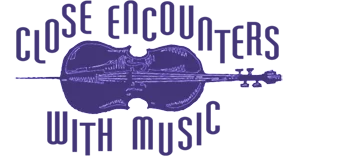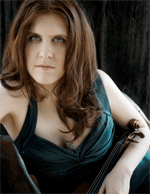Berkshire Living Music Review: Close Encounters at the Mahaiwe
(Great Barrington, Mass., June 6) — Even though Close Encounters With Music impresario Yehuda Hanani was sidelined by a high fever and too ill to perform, Saturday night’s season finale, “Prague in Spring.” at the Mahaiwe Performing Arts Center was among the most dynamic, artistically successful ventures this listener has enjoyed in the 17-year history of this off-season series.
Hanani was able to deliver his usual pre-concert mini-lecture prior to retiring backstage to rest; he explained that after three days of intensive rehearsals with his chosen guest artists in New York City, he was taken ill en route home to Spencertown, N.Y., on the Taconic State Parkway. His wife, Hannah, motored at high speed toward the Columbia Memorial Hospital in Hudson, N.Y., but was flagged down by a state trooper. “A lady in distress shouldn’t be driving,” the sympathetic officer told her, Hanani told the audience. An ambulance was summoned, and “I arrived at the hospital in style,” he quipped. Lyme Disease is a potential diagnosis.
A shrewd programmer and keen judge of talent, the professor of cello at the University of Cincinnati College-Conservatory of Music (CCM) since 1987 had already assembled an all-star chamber-music cast for the high-priced gala performance. Upon learning of his illness, the artists made a literally eleventh-hour concert-eve appeal to cellist Wilhelmina Smith, who knew the repertoire and happened to be available despite a busy schedule. On Saturday morning, she loaded her cello, husband and two children into a car for the drive to Great Barrington and an early-afternoon rehearsal.
Smith turned to have been an inspired choice for pianist Lydia Artymiw, violinists Erin Keefe and Lily Francis and violist Toby Appel — their performance of Dvorak’s high-spirited and poetic Piano Quintet, Op. 81 – a desert-island chamber masterwork for most of us — was fleet, nimble, poignant and hair-raising. Of the many live and recorded performances I’ve heard, only a few have measured up to this high standard.
Appel’s prominent part was played with high distinction; Artymiw, a well-known concerto performer with leading orchestras as well as a highly-regarded chamber musician, contributed an assertive, at times hard-driving, interpretation that offered new insights into one of Dvorak’s most-inspired compositions. Violinists Keefe and Francis played well together, literally, and as for Smith, her rich, lush, vibrant tone and spot-on intonation was revelatory.
Smith, a prizewinner in the prestigious Leonard Rose International Cello Competition 13 years ago, was a natural choice since Hanani had studied with Rose decades ago; she made an auspicious debut with the Philadelphia Orchestra in 1988 while still a student at the Curtis Institute. Her current credentials are impeccable — Chamber Music Society of Lincoln Center, performances with Joshua Bell and the St. Paul Chamber Orchestra, Dawn Upshaw, Yo-Yo Ma, the New York Philharmonic and the Mannes Trio, to cite just a few — and a return engagement at Close Encounters next season would be welcomed with enthusiasm.
The all-Czech program opened with Leos Janacek’s Sonata for Violin and Piano — Keefe and Artymiw captured the jagged, at times thorny, highly accented spirit of the work inspired by the folk music of his native Moravia (part of the Austrian Empire during the 19th century). Janacek’s thoroughly original, groundbreaking style resembles a conversation in the easily-identifiable rhythm, inflections and pitch of the Czech language. This is most evident in the 1914 sonata, reflecting the composer’s anxiety at the outset of World War I; the interplay between piano and cello is alternately agitated and nostalgic; near the end, the violin offers ghostly echoes of the piano’s fragmentary theme. An inspired work, too rarely heard.
Smetana’s Op. 15 Piano Trio is, by turns, hauntingly beautiful and painfully grim; no wonder, since it contains a dirge-like theme and variations reflecting the composer’s grief over the 1855 death of his four-year-old daughter, Bedriska, a victim of scarlet fever, just a year after Gabriela, his second daughter, succumbed to tuberculosis, the same disease that later claimed his wife. The trio is elegiac, a deeply personal work that, at times, arouses tears and sympathy for this personally troubled composer who became deaf in mid-career yet ranks with Dvorak among the greatest Czech composers. Artymiw, Keefe and Smith probed deeply into this disturbing, fascinating work that seizes the listener by the lapel and never lets go. (While writing this review, I downloaded a recording and played it three times.)
After intermission, Close Encounters board chair Marcie Setlow appealed for season subscriptions to finance the 2010-11 schedule, which includes five performances at the Mahaiwe, one at Ozawa Hall, one at the Lenox Athenaeum and two at Manhattan’s Frick Collection. Judging from this inspired season-ender, it would be a worthwhile investment for discerning music lovers.


